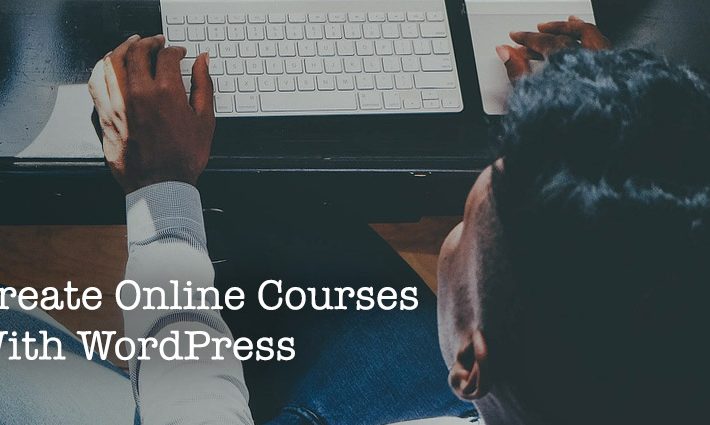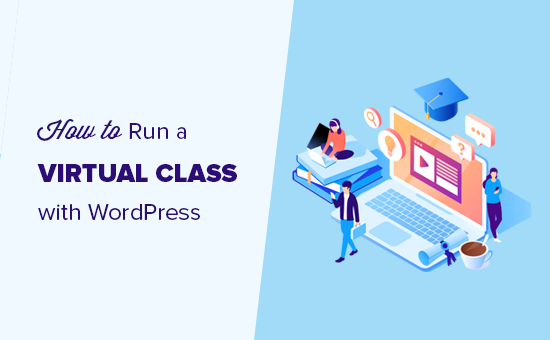
Virtual classrooms have become popular due to social isolation. After the lockdown measures were lifted, a lot of people stuck to the virtual format of education. It has a lot of benefits for teachers and students alike. Any sort of educational material fits well for a virtual classroom. You do not have to be a web design pro to start a virtual classroom of your own.
Whether you are a college teacher, a private tutor, one of the paper writers online, or just a skilled person who wants to share their knowledge, a virtual classroom is a good starting point to share your expertise.
WordPress is a great free platform for the creation of websites. A virtual classroom is one of the options that the platform provides. WordPress has all the necessary tools to make your virtual classroom look good and work fine.
Vital Rules For Virtual Classroom Creation

There are several important rules to follow if you want to create a working and successful virtual classroom. The rules exist as guiding points for your virtual classroom to be successful and engaging for students. They are not mandatory but highly advised to follow:
- Create a sign-up form for your class. When people use the WordPress resource as users, they need to register within its ecosystem. Still, you need a formal registration for your class attendance. It may be a questionnaire or something more complex like a calendar. Knowing how many students will come to your class is the information that you always want to know.
- Ensure the way of communication between you and the students. You want to have an efficient means of communication with your students. It may be an e-mailing, a group chat, or something similar. Tools provided by WordPress and third-party programs will work equally well. The point is to ensure communication.
- Create space for communication between students. An online group or forum is a support for your online classes. Direct correspondence between you and students is a formal means of communication. An informal means is vital for class success too. Students need free space for communication and discussion of the educational material. Make sure to provide them with one. Otherwise, they may ask each other to do my homework and look for outside help. Still, they need an online platform to express their thoughts and ask questions.
- Registered members-only content. When you create online classes, you need to ensure students’ registration and sticking to the course till the end. One of such methods is the members-only content. It may be a podcast or an additional video lesson for a certain subject. Members-only content is a good way to motivate your audience to stay true to the course.
- Interactive content. One of the benefits of online classes is the possibility to record a lesson beforehand. Still, you need to create interactive lessons as well. Screen sharing, feedback from the audience, and interactive polls will contribute to students’ engagement in the online class.

These rules are key for successful online class functionality. However, they are only a foundation for the creation of something special. You may adapt some of them for your style or even ignore some of the rules if they do not fit you.
The most important rule for online classes is to create authentic material. You need to have a drive for the field of your choosing. In addition, you need to have a passion for sharing it with people. The question of monetization is up to you.
WordPress has the necessary tools to provide monetization for online classes. However, the means and models for online lessons monetization is a topic for another discussion. Still, if you create an authentic product, it will become successful.
Recorded Lessons And Online Classes
There are two main formats of lessons for a virtual classroom. You may record all the lessons beforehand, and you may stream them live. Each of the formats has its advantages and disadvantages.
Pre-recorded lessons allow everyone to learn the material at a comfortable pace. They are also easier for a teacher because they can record lessons in perfect conditions. Nevertheless, such types of lessons lack interactivity. Students cannot ask questions and clarify the information right at the moment. Such sort of issue remains for indirect communication with other students and the teacher.
Live lessons fix this issue. They look more like actual classes when a teacher presents a lecture. Besides, students may ask their questions and communicate actively. Still, online lessons require a solid technical background. Each participant in the lesson should have a good internet connection and the necessary hardware for running all of the applications required.
If something of these pieces is missing, issues are inevitable. A student may miss an important piece of information. The lagging connection may distort a vital piece of data. It would be good if the lesson was recorded parallelly, but it is not always possible.
Therefore, mixing recorded and online classes is a key to a successful virtual classroom. Recorded videos fit well for lectures and important theoretical information. A student’s knowledge check may be done between the lectures via independent study.

Online classes work well for seminars and examinations. The teacher and the students can allow time for all necessary preparations to minimize the risk of technical issues. The rules above will help to make everything work smoothly.
Final Words
Virtual classrooms exist outside of social isolation and lockdowns. It is a comfortable and modern form of education. Anyone can teach anything. If you do not have technical experience in creating an online platform, there are a lot of options out of the box.
WordPress provides all the necessary tools to create a successful and working virtual classroom. Follow the provided tips, and you will ensure the stable presence of students in your virtual classroom.
The nature of the lesson does not matter either. You may teach academic information, run yoga classes, or give personal business coaching – a virtual classroom is a perfect place for any sort of education.




